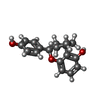Entry Database : PDB / ID : 2pogTitle Benzopyrans as Selective Estrogen Receptor b Agonists (SERBAs). Part 2: Structure Activity Relationship Studies on the Benzopyran Scaffold. Estrogen receptor Keywords / / Function / homology Function Domain/homology Component
/ / / / / / / / / / / / / / / / / / / / / / / / / / / / / / / / / / / / / / / / / / / / / / / / / / / / / / / / / / / / / / / / / / / / / / / / / / / / / / / / / / / / / / / / / / / / / / / / / / / / / / / / / / / / / / / / / / / / / / / / / / / / / / / / / / / / / / Biological species Homo sapiens (human)Method / / / Resolution : 1.84 Å Authors Richardson, T.I. / Norman, B.H. / Lugar, C.W. / Jones, S.A. / Wang, Y. / Durbin, J.D. / Krishnan, V. / Dodge, J.A. Journal : Bioorg.Med.Chem.Lett. / Year : 2007Title : Benzopyrans as selective estrogen receptor beta agonists (SERBAs). Part 2: structure-activity relationship studies on the benzopyran scaffold.Authors : Richardson, T.I. / Norman, B.H. / Lugar, C.W. / Jones, S.A. / Wang, Y. / Durbin, J.D. / Krishnan, V. / Dodge, J.A. History Deposition Apr 26, 2007 Deposition site / Processing site Revision 1.0 Sep 11, 2007 Provider / Type Revision 1.1 Jul 13, 2011 Group Revision 1.2 Oct 18, 2017 Group / Category Revision 1.3 Oct 20, 2021 Group / Category / struct_ref_seq_difItem / _database_2.pdbx_database_accession / _struct_ref_seq_dif.detailsRevision 1.4 Feb 21, 2024 Group / Category / chem_comp_bond
Show all Show less
 Yorodumi
Yorodumi Open data
Open data Basic information
Basic information Components
Components Keywords
Keywords Function and homology information
Function and homology information Homo sapiens (human)
Homo sapiens (human) X-RAY DIFFRACTION /
X-RAY DIFFRACTION /  SYNCHROTRON /
SYNCHROTRON /  MOLECULAR REPLACEMENT / Resolution: 1.84 Å
MOLECULAR REPLACEMENT / Resolution: 1.84 Å  Authors
Authors Citation
Citation Journal: Bioorg.Med.Chem.Lett. / Year: 2007
Journal: Bioorg.Med.Chem.Lett. / Year: 2007 Structure visualization
Structure visualization Molmil
Molmil Jmol/JSmol
Jmol/JSmol Downloads & links
Downloads & links Download
Download 2pog.cif.gz
2pog.cif.gz PDBx/mmCIF format
PDBx/mmCIF format pdb2pog.ent.gz
pdb2pog.ent.gz PDB format
PDB format 2pog.json.gz
2pog.json.gz PDBx/mmJSON format
PDBx/mmJSON format Other downloads
Other downloads 2pog_validation.pdf.gz
2pog_validation.pdf.gz wwPDB validaton report
wwPDB validaton report 2pog_full_validation.pdf.gz
2pog_full_validation.pdf.gz 2pog_validation.xml.gz
2pog_validation.xml.gz 2pog_validation.cif.gz
2pog_validation.cif.gz https://data.pdbj.org/pub/pdb/validation_reports/po/2pog
https://data.pdbj.org/pub/pdb/validation_reports/po/2pog ftp://data.pdbj.org/pub/pdb/validation_reports/po/2pog
ftp://data.pdbj.org/pub/pdb/validation_reports/po/2pog Links
Links Assembly
Assembly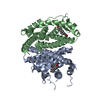
 Components
Components Homo sapiens (human) / Gene: ESR1 / Production host:
Homo sapiens (human) / Gene: ESR1 / Production host: 
 X-RAY DIFFRACTION / Number of used crystals: 1
X-RAY DIFFRACTION / Number of used crystals: 1  Sample preparation
Sample preparation SYNCHROTRON / Site:
SYNCHROTRON / Site:  APS
APS  / Beamline: 31-ID
/ Beamline: 31-ID Processing
Processing MOLECULAR REPLACEMENT / Resolution: 1.84→24.98 Å / Rfactor Rfree error: 0.004 / Data cutoff high absF: 2220994.75 / Data cutoff low absF: 0 / Isotropic thermal model: RESTRAINED / Cross valid method: THROUGHOUT / σ(F): 0 / Stereochemistry target values: Engh & Huber
MOLECULAR REPLACEMENT / Resolution: 1.84→24.98 Å / Rfactor Rfree error: 0.004 / Data cutoff high absF: 2220994.75 / Data cutoff low absF: 0 / Isotropic thermal model: RESTRAINED / Cross valid method: THROUGHOUT / σ(F): 0 / Stereochemistry target values: Engh & Huber Movie
Movie Controller
Controller


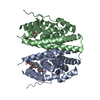
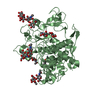
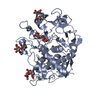
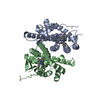
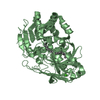

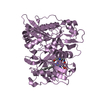
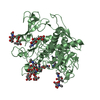
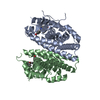

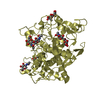
 PDBj
PDBj




